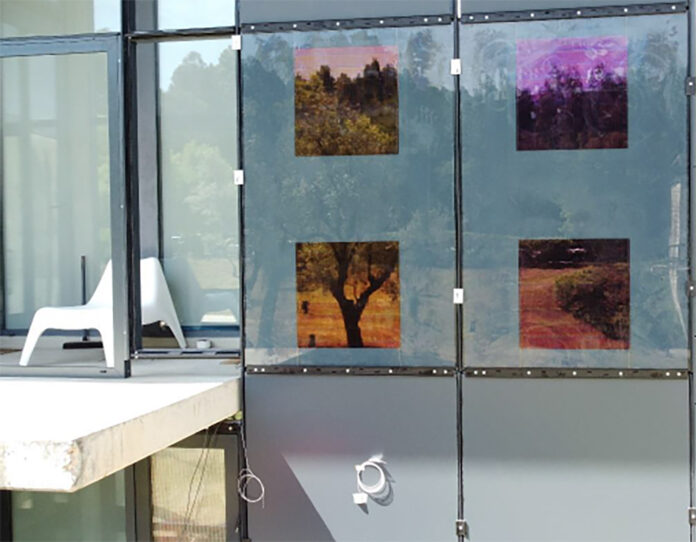POWERSKIN PLUS was a groundbreaking EU-funded project that developed innovative facade solutions for non-residential buildings. Facade Today explores how this initiative created prefabricated, modular elements integrating advanced energy-efficient components to address nZEB and PEB challenges. Key features included modular glazing with integrated energy storage, advanced insulation with nano-enabled coatings, and semi-transparent PV cells. The project demonstrated significant improvements in U-values, energy efficiency, and sustainability, showcasing its versatility through demonstrations in three European countries and setting a benchmark for future energy-efficient facades contributing to the EU’s 2050 carbon neutrality goal.
The POWERSKIN PLUS Project
Unlocking Sustainable Building Potential
POWERSKIN PLUS was a groundbreaking project, finalized in April 2024, that aimed to develop innovative facade solutions for non-residential buildings. The project received funding from the European Union’s Horizon 2020 research and innovation. Its goal was to create prefabricated, modular glazing and opaque elements that integrated advanced energy-efficient components, addressing the challenges of nearly zero-energy buildings (nZEBs) and Plus Energy Buildings (PEBs).
Key features of POWERSKIN PLUS included:
Modular glazing with integrated energy storage: The system incorporates active and passive thermal energy storage (TES) solutions within the facade elements. This integration allows for efficient energy management and helps balance energy supply and demand in buildings.
Advanced insulation and multifunctional nano-enabled coatings: POWERSKIN PLUS utilizes super-insulative elements and breakthrough technologies based on nano-formulated vacuum insulation panels (VIP) and phase change materials (PCM). The facade modules also feature multifunctional coatings with self-cleaning, light-reflective or absorbing, and self-healing properties.
Integration of semi-transparent photovoltaic (PV) cells: The system incorporates semi-transparent PV cells, likely using advanced technologies such as perovskite solar cells. This integration allows for on-site renewable energy generation while maintaining transparency for daylighting and aesthetics.
The project was carried out by a consortium of 14 partners from 8 European countries, including IPN, Fraunhofer ICT, Friedrich-Schiller-Universität Jena, Brunel University London, Flachglas Sachsen, Politecnico di Torino, Oxford Brookes University, Czech Technical University, FENIX TNT, Navodnik, Saule Technologies, Warsaw University of Technology, AMSolutions, and Saule Research Institute.
U-Value Revolution
A Triple Threat for Energy Efficiency
The POWERSKIN PLUS project introduced several innovative materials and technologies to enhance facade performance:
Vacuum Insulation Panels (VIP) and Phase Change Materials (PCM): The project utilized nano-formulated VIPs, which provided superior insulation with U-values as low as 0.098 W/m2K for opaque modules. PCMs were integrated to improve thermal energy storage and regulation within the facade system.
Flexible Thin Glass Solar Cells: The project incorporated advanced perovskite solar cells on ultra-thin flexible glass substrates. These cells achieved high efficiencies under indoor lighting conditions, with specific power 40-55% higher than cells on plastic substrates. This technology allowed for seamless integration of energy harvesting capabilities into the facade.
Eco-designed Framings: Finally, the project developed sustainable connecting framings to complement the modular glazing and opaque elements, enhancing the overall environmental performance of the system.
The project achieved significant improvements in U-values, with insulated glass units performing 35% better than standard double glazing. The integration of VIPs and PCMs further enhanced thermal performance and energy storage capabilities.
In terms of decarbonization, POWERSKIN PLUS aimed to accelerate the transition towards carbon-neutral building standards by developing solutions for nearly zero-energy buildings (NZEBs) and Plus Energy Buildings (PEBs), contributing to the EU’s ambitious goal of carbon neutrality by 2050. The system combined passive elements for minimizing energy demand with active components for on-site energy generation and storage. This approach maximized indoor environmental quality while reducing overall energy consumption. The integration of semi-transparent PV cells and a dedicated large-capacity electric storage system provided a comprehensive energy management solution.
Lightweight Solutions for Heavy Impact
The Circular Economy Strategy
By combining these innovative materials and technologies, POWERSKIN PLUS demonstrated significant advancements in facade performance, and benefits for non-residential buildings. Lightweight modules enabled easy installation without structural modifications, making the system ideal for both retrofitting and new construction. This approach minimized disruption and reduced installation time and costs.
The project showcased its versatility through demonstration projects in three European countries 1. These demo sites represented different climates and building practices, validating the system’s potential in various real-world scenarios.
Circular Economy in Facade Design
By incorporating circular economy principles in its design, POWERSKIN PLUS focused on developing sustainable eco-designed connecting framings, enhancing the overall environmental performance of the system.
A key innovation was the use of second-life electric vehicle batteries for energy storage. This approach not only provided a large-capacity building electric storage system but also contributed to the circular economy by repurposing batteries that might otherwise become waste.
The modular nature of POWERSKIN PLUS inherently supported disassembly and material recovery. By creating prefabricated, “ready-to-buy” elements, the project ensured that components could be easily replaced, upgraded, or recycled at the end of their life cycle, further promoting sustainable building practices.
(1) https://www.powerskinplus.eu/demo-sites
Market Momentum
A Blueprint for Energy-Efficient Facades
POWERSKIN PLUS incorporated multifunctional nano-enabled coatings that offered self-cleaning, light-reflective or absorbing, and self-healing properties. These coatings enhanced both the aesthetic appeal and functional performance of the facade systems.
The project’s modular nature allowed for customizable design options, enabling architects to integrate the system seamlessly into various architectural styles. The prefabricated elements could be tailored to match specific needs and refurbishment budgets, offering flexibility in design while maintaining high energy efficiency.
Challenges and Future Prospects
Scaling up modular facade systems for widespread adoption remains a challenge. While POWERSKIN PLUS demonstrated success in three European countries, expanding to diverse climates and building practices will require further research and development.
Facade engineers and architects play a vital role in advancing sustainable building technologies. Their expertise in integrating these complex systems into building designs is essential for achieving nearly zero-energy buildings (NZEBs) and Plus Energy Buildings (PEBs).
POWERSKIN PLUS serves as a model for future energy-efficient facades, demonstrating the potential of combining advanced insulation, energy harvesting, and storage technologies. As the project concluded in March 2024, it has set a benchmark for innovative facade solutions that contribute to the EU’s goal of decarbonizing national building stocks by 2050.
= = = =
Useful links:
As the Editor of FacadeToday.com, I merge my passion for Design, Architecture and Technologies with three decade of experience collaborating with entrepreneurs across many industries. My career has centered on fostering innovation, scaling business opportunities, and bridging gaps between technical experts, business developers, and creative visionaries. I thrive at the intersection of sustainable solutions, material advancements, and smart technologies, curating insights on themes like energy-efficient facades, smart tech, and advanced manufacturing. With a commitment to lifelong learning, I aim to empower architects and facade engineers by translating innovations into actionable knowledge, driving the industry forward through purposeful connectivity and cutting-edge practices.





